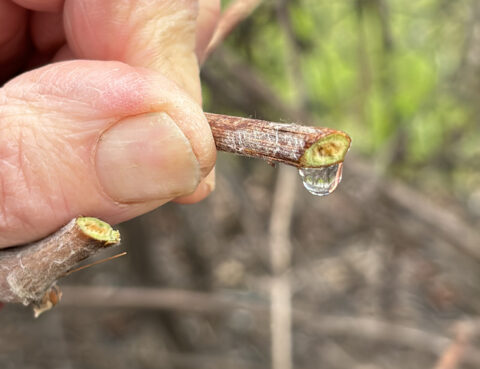
Root Pressure and the Flow of Sap Director Lew Feldman A Garden member recently wrote me seeking an explanation for the liquid (sap) dripping from the cut ends of her newly pruned ‘Roger’s Red’ grapevines. The dripping had continued for over a week and she wondered about the cause, and whether the loss of sap…

Seeking Spatial Patterns of Photosynthesis: Innovative technology and the UC Botanical Garden Collections Paul Seibert How does photosynthesis change across the surface of a leaf? This was the driving question that led to my involvement with the UC Botanical Garden at Berkeley. My name is Paul Seibert, and I am an environmental engineering PhD student…

All in the Name of Reproduction Nature creates an amazing array of patterns in the plant world providing us with a never-ending source for observation and inspiration. Look closely at a fern frond, and you can see the evidence of this patterning in the various dots or dashes that appear, typically on the underside of…
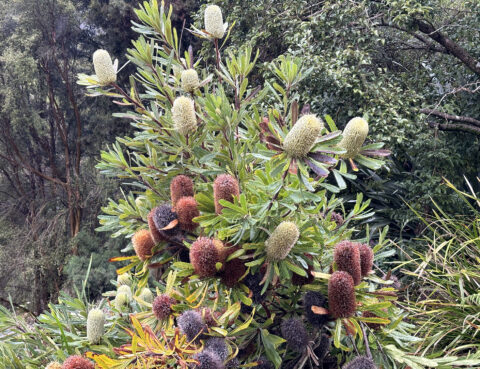
By Director Lew Feldman The UC Botanical Garden has a small but remarkable collection of Banksia species (12 of an estimated 183 different species), many of which are now flowering in the Garden’s Australasian Area. These plants are native to Australia and New Guinea where they range in size from prostrate shrubs to trees, up…

Bark and its Response to Environmental Fluctuations Director Lew Feldman Bark is the outer layer of most woody eudicot and gymnosperm trees that show an increase in stem (trunk) diameter. Because bark is directly exposed to the external environment, it often functions to mitigate the numerous environmental “insults” encountered by the plant. Indeed, the type…
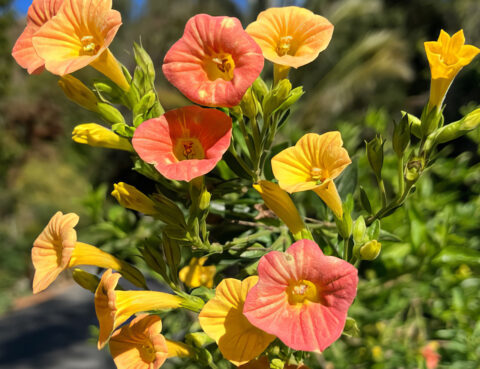
Multicolor flowers–a pollinator training strategy Director Lew Feldman On a recent walk through the Garden I observed the multicolored flowers of marmalade bush (Streptosolen jamesonii), shown above in the South American area. This plant is fascinating in that the flowers change color after they have been pollinated. We now know that plants evolved multicolored flowers…
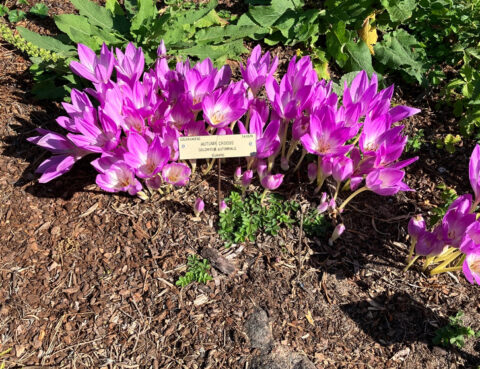
Don’t mistake this autumn crocus for saffron! By Dr. Lew Feldman One of the first signs of the arrival of autumn is the appearance of autumn crocus (Colchicum autumnale), growing in the medicinal plants section of the Herb Garden at the UC Botanical Garden. This beautiful flower originates from the corm of a European endemic…
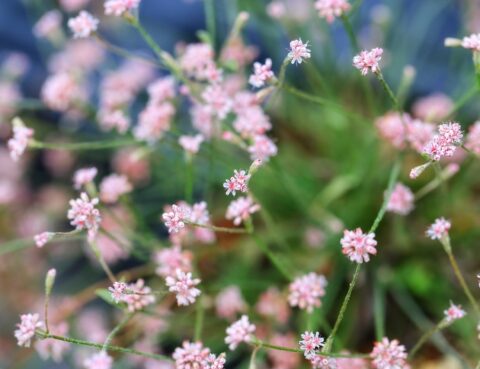
Conservation Projects Protecting biological diversity Conservation of plant biodiversity is central to the Garden’s mission, and much of this work happens ‘behind-the-scenes’. We’re excited to share news about the Garden’s partnership with the Mt. Diablo Buckwheat Working Group, a consortium of local stakeholders including California State Parks, among others, working together to preserve Mt. Diablo…
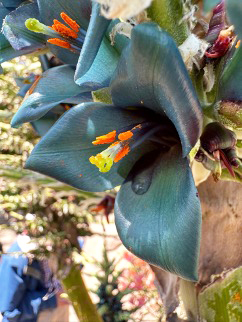
Garden Director Lew Feldman Unlike pollen, which is released by the flower only once, nectar is a renewable resource, often replaced daily, especially in long-lived flowers such as puyas. It is unusually sweet, a fact not lost on the Garden’s resident squirrels! Nectar is the main floral reward for bees and birds, and while sweet…

Garden Director Lew Feldman The Garden’s Mather Redwood Grove is part of the California collection and contains over 450 coast redwoods (Sequoia sempervirens). Given that the trees in the Grove are planted so densely, I am often asked how the understory plants, such as Oxalis oregana (wood sorrel), are able to capture enough sunlight for…
